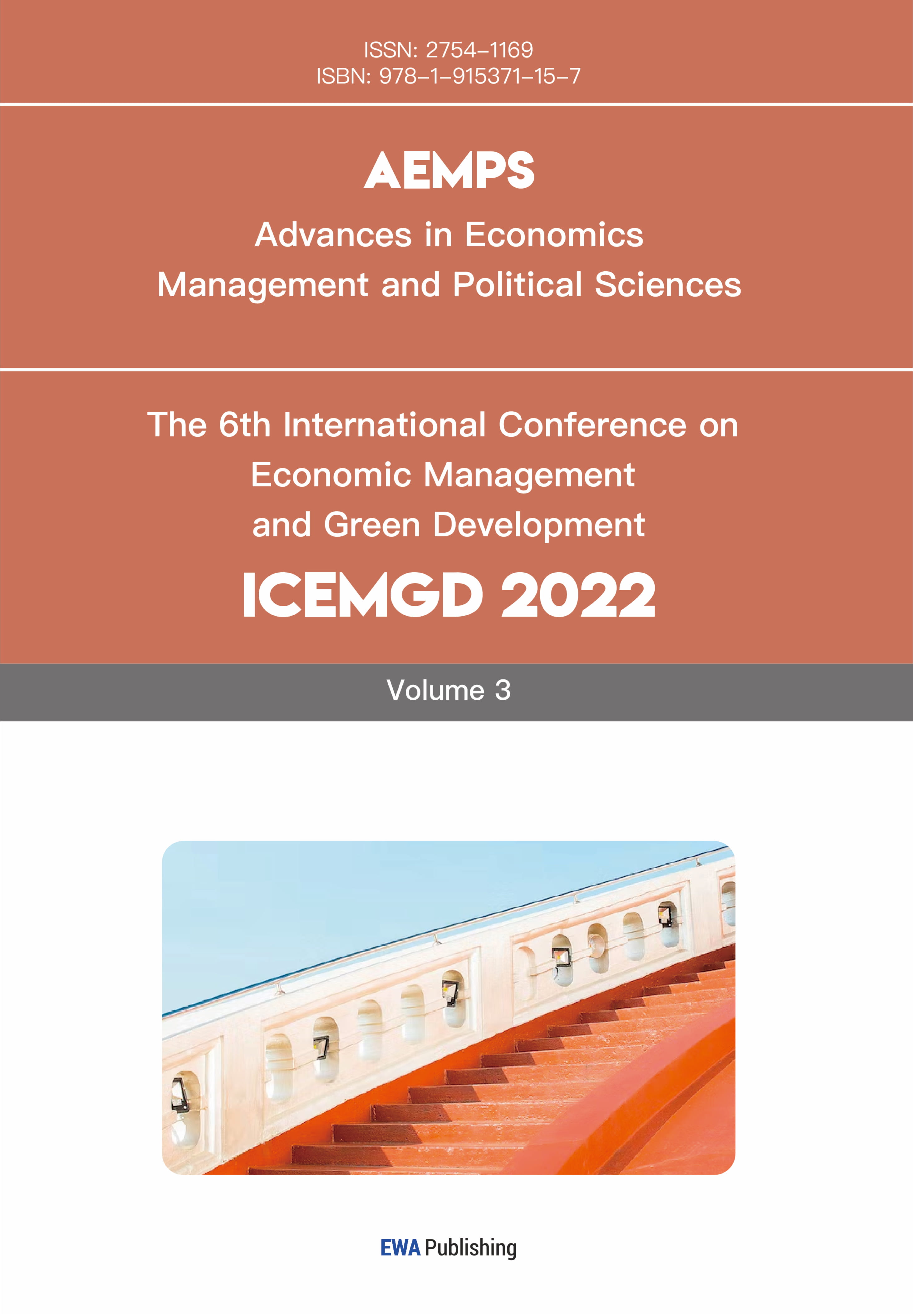References
[1]. Chen, J., (2024). Global catastrophe bond issuance has surged as extreme weather events take hold. Paper.cnstock.com. Retrieved from https://paper.cnstock.com/html/2024-07/08/content _1940344 .htm
[2]. Ji, Q., Zhao, W., Zhang, D., Guo, K.(2022). Climate Risk Perception and Its Impacts on Financial Markets: Micro-Evidence from Listed Firms in China. China Journal of Econometrics, 2022, 2(3): 666-680 https://doi.org/10.12012/CJoE2021-0067
[3]. Intergovernmental Panel on Climate Change (IPCC). (2021). Sixth Assessment Report. Retrieved from https://www.ipcc.ch/assessment-report/ar6/
[4]. China Meteorological News Press. (2024). Blue Book on Climate Change of China 2024 unveiled. Retrieved from https://www.cma.gov.cn/en/research/news/202407/t20240705_6401691.html
[5]. Worthington, A., & Valadkhani, A. (2004). Measuring the impact of natural disasters on capital markets: An empirical application using intervention analysis. Applied Economics, 36(19), 2177–2186. https://doi.org/10.1080/0003684042000282489
[6]. Kmetz, A., Kruttli, M., Tran, B., Watugala, S. and Yan, A. (2024). Extreme Weather and Financial Market Uncertainty. FRBSF Economic Letter. [online] Available at: https://www.frbsf.org/research-and-insights/publications/economic-letter/2024/01/extreme-weather-and-financial-market-uncertainty/#brigitte-roth-tran.
[7]. Worthington, A., (2008), The Impact of Natural Events and Disasters on the Australian Stock Market: A GARCH-M Analysis of Storms, Floods, Cyclones, Earthquakes and Bushfires, Global Business and Economics Review, 10(1): 1-10
[8]. Li, C., Liu, Y. & Pan, L.(2024). A study of impact of climate change on the U.S. stock market as exemplified by the NASDAQ 100 index constituents. Sci Rep 14, 15468. https://doi.org/10.1038/s41598-024-66109-7
[9]. Lanfear, M. G., Lioui, A., & Siebert, M. (2017). Are value stocks more exposed to disaster risk? Evidence from extreme weather events. SSRN Electronic Journal. https://doi.org/10.2139/ssrn.2892948
[10]. Malik, I. A., Faff, R. W., & Chan, K. F. (2019). Market response of US equities to domestic natural disasters: Industry-based evidence. Accounting & Finance. https://doi.org/10.1111/acfi.12484
[11]. Shao, L. B., & Zheng, Z. (2023). Typhoons’ effect, stock returns, and firms’ response: Insights from China. Journal of University of Science and Technology of China, 53(0), 1–1. https://doi.org/10.52396/justc-2022-0157
[12]. China Meteorological Administration (CMA). (2024). Data News: Typhoon generation and landfall numbers are low, 'Yagi' started the process of fall typhoon - China Meteorological Administration government portal. [online] Available at: https://www.cma.gov.cn/2011xwzx /2011xqxxw/2011xqxyw/202409/t20240903_6531065.html?from=singlemessage.
[13]. Dolley, J.C. (1933). Characteristics and Procedures of Common Stock Split-Ups. Harvard Business Review. Apr. 1933, 11, pp. 316-26.
[14]. Fama, E. F., Fisher, L., Jensen, M. C., & Roll, R. (1969). The Adjustment of Stock Prices to New Information. International Economic Review, 10(1), 1–21. https://doi.org/10.2307/2525569
[15]. Box, G. E. P., & Tiao, G. C. (1975). Intervention Analysis with Applications to Economic and Environmental Problems. Journal of the American Statistical Association, 70(349), 70-79. https://doi.org/10.1080/01621459.1975.10480264
[16]. Zhao, J., Yu, S., & Wu, F.(2014). Natural disasters and social violences events and stock prices. Journal of Management Sciences in China, [online] 17(4), pp.1–15. Available at: http://jmsc.tju.edu.cn/jmsc/article/abstract/20140406
[17]. Yin, R., & Newman, D. H. (1999). intervention analysis of Hurricane Hugo's effect on South Carolina's stumpage prices. Canadian journal of forest research, 29(6), 779-787. https://doi.org/10.1139/x99-035



